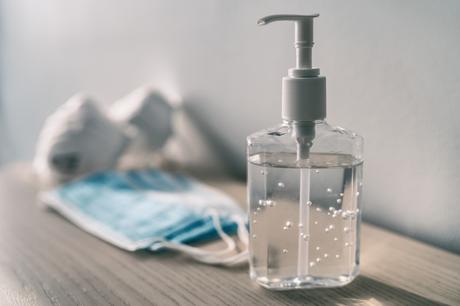
With the pandemic happening all around the world, the whole society's reaction to it got us changing several things in our daily lives, and one of them includes the constant hand-cleaning as well as the introduction of alcohol spreaders and hand sanitizers in houses, retail stores, among many other types of buildings.
This countermeasure, as well as using masks to prevent COVID-19 from spreading through our fluids (when talking, sneezing, yawning, or suchlike actions) are the main actions we can take to help out and avoid a higher risk of infection. And as Fizzymag claims, this was something not everyone would consider using on a regular basis.
The government, on the other hand, took other countermeasures such as quarantine time, curfews, and the closing or limit of entry to establishments where large numbers of people conglomerated on a daily basis, such as supermarkets, bars, discos, and so on.
Still, the situation is far from over, and as citizens, we should make sure we are doing everything in our power to not worsen the situation. One of the things people should be careful about is the proper method of cleaning their hands, as well as the quality of the sanitizers they use.
Something to note is that soap and water are actually the best alternatives we can use to get rid of the virus, but considering how we can't always clean our hands with soap and water, hand sanitizers have become more accessible and far quicker method to deal with the situation.
A hand sanitizer can also be described as a gel, foam, or liquid agent that is ultimately used to deal with agents that could bring harm to our health, and also increase our hand's hygiene by getting rid of external infectious and non-hygienic components.
But not all sanitizers are effective. In fact, you can even find non-alcoholic gels that bring no benefits to the table other than providing a pleasant aroma to your hands. In most cases, a gel should at least contain between 60 to 70% of alcohol to be effective against most bacteria and viruses around.
In most healthcare situations such as the one we are going through, although water and soap are much more effective, using hand sanitizer is much more common because it is much more reliable and accessible to people that have no access to water.
That is the very reason why several countries only allow the entrance to certain places such as supermarkets and stores, only if the person has previously cleaned its hands with gel, and is wearing a mask.
And before we talk about what makes a good sanitizer, we have to talk about how the way we clean our hands with it (and with water and soap) is also important.
A Good Quality Hand Sanitizer Should...
Just in case you didn't know, the right way to apply this liquid is by properly cleaning your hands without leaving any place uncleaned. This includes cleaning the front and back-side of the nails, the area between the fingers, the front, back and the sides of the hand and the wrist.
With the pandemic crisis happening around the world, a lot of companies and local stores started creating their own gels. The problem with this is that, although many actually created functional hand sanitizers, others didn't, and for faulty reasons: saving money in materials.
The first thing you need to pay attention to is whether the gel contains 60 to 70% of alcohol. If it doesn't, it won't effectively get rid of any virus or bacteria your hands might encounter while you do stuff.
The bad odor that comes from hand sanitizers tend to be intentional, and it happens because of the alcohol. Although this can be avoided easily, and you can even find tutorials online, but you have to make sure you are doing things the right way.
For example, here's a guideline you can follow showcasing all the important things a gel should count to be effective: https://blog.zogics.com/alcohol-based-vs-alcohol-free-hand-sanitizers/
Still, if possible, you should stick with water and soap, considering how the alcohol and other components found in hand cleaning gels can dehydrate the skin and cause a wide range of minor side-effects. And at the end of the day, water and soap are much more effective!
